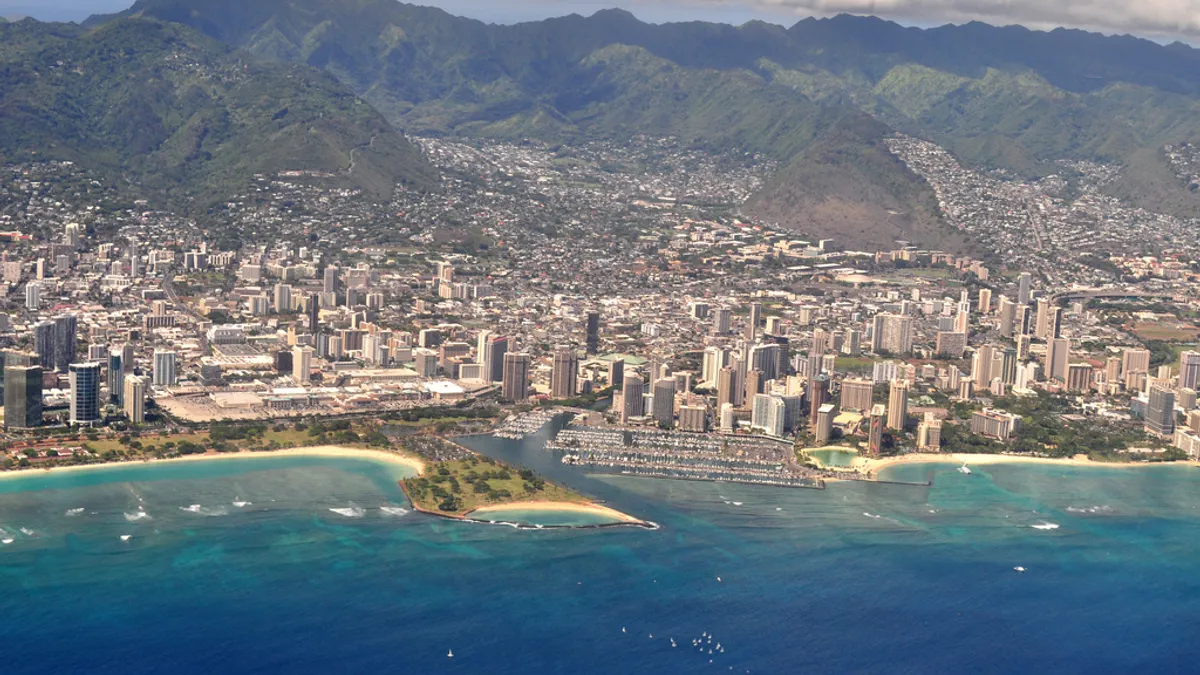Dive Brief:
- Hawaiian Electric Co. cleared its October 2014 backlog of solar PV systems by approving the 206 remaining applications, Pacific Business News reports. The utility said the systems were located mainly on circuits with high solar penetration and that it already handled more than 2,500 interconnections on systems with less solar earlier this year.
- Hawaiian Electric also reported that the 333 rooftop solar customers on Maui and the 336 rooftop solar customers on the Big Island awaiting interconnection have also been cleared.
- The company's move completes the applications eligible for the retail rate net metering credit, which was terminated earlier this year by state regulators. All told, the utility has approved over 74,000 PV installations in Hawaii.
Dive Insight:
Hawaiian Electric had committed to clearing its queue by the end of the year, which included approving solar PV systems on circuits with high solar penetrations as long as they met requirements dealing with grid reliability and safety while incorporating approved inverters and other equipment.
When the level of PV system penetration forced interconnections to a halt, the utility turned to Enphase Energy for a solution. The company's remotely reprogrammable smart inverters helped solar support grid stability by giving the utility’s grid operators greater visibility of voltage and frequency fluctuations. That visibility allows both utility and solar installers to resolve distribution system issues faster.
“The company is very focused on this group of customers and reviewing their NEM applications in order to implement the commission’s order and fully bring closure to the NEM program, and transition to the new, approved customer programs,” Hawaiian Electric said in a statement.
Hawaii regulators voted this fall to end retail rate net metering in the state, shaking the foundation of the state's solar industry.
New solar systems will be interconnected under either the commission’s “self-supply” option or “grid supply” option.
The grid-supply option replaces NEM with a new credit of $0.151/kWh for Oahu, $0.154/kWh for Hawaii, and $0.172/kWh for Maui. The credits are derived from the avoided cost of fossil fuel during peak generation hours measured from July 2014 to June 2015.
The self-supply option is primarily aimed at creating solar owners who do not export generation to the grid, though the commission stressed no non-export design should prevent solar systems from providing grid support.
The self-supply tariff allows system owners to earn retail rate credit in the form of reduced bills for generation that aligns with their energy demand patterns. Utilities are required to manage the self-supply option and provide streamlined interconnection standards for customers who choose it.














